MORE GEMS OF THE BURGUNDY DISTRICT
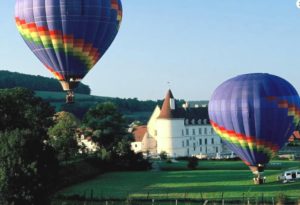
Burgundy has such a wealth of attractions, ranging from the famous vineyards and the two major towns of Dijon and Beaune, it’s easy to lose a sense of time in these places and not leave enough to explore the region in greater depth. There are so many rewarding sights to discover, ranging from hilltop medieval villages and Gallo-Roman strongholds, to the quiet beauty of abbeys and monasteries, not to mention hot air ballooning or a gentle cruise along one of the region’s canals. There’s huge selection of exciting things to see and do, enough for many visits. Here are a few more interesting suggestions.
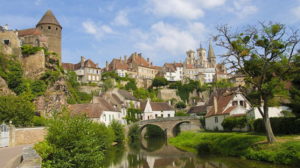
An hour’s drive north-west of Dijon is one of the loveliest towns in Burgundy, Semur-en-Auxois, in the heart of the Côte d’Or. Built on a pink granite rocky outcrop above the river Armançon, which half-encircles the town, it’s guarded by the solid round towers of its castle which loom high over the river. As you approach the medieval walls that still surround the inner part of the town, you’ll enjoy one of the most exceptional views from the bridge. The many quaint cobblestone streets of the medieval town are lined with centuries old half-timbered houses, and there are plenty of opportunities for dining and shopping in the pedestrianised core.
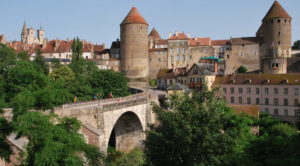
A must-see sight, the Tour de l’Orle d’Or (open May – Sept.) is a 13th century watch tower where guards once surveyed the surrounding countryside. As an interesting aside, the brilliant military engineer, Vauban, who designed many of the country’s most spectacular fortresses, was educated here, at the Carmelite college.
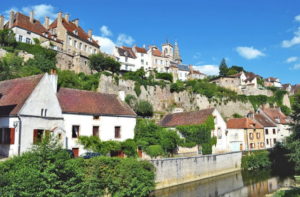
Approx. 16kms east of Semur-en-Auxois and also in the heart of the Côte d’Or, atop a rocky spur, lies the picturesque village of Flavigny-sur-Ozerain, now designated as one of the Plus Beaux Villages de France.
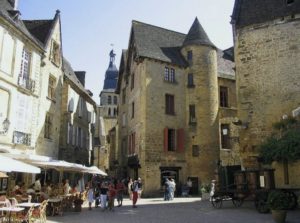
A stroll through its narrow, medieval streets, admiring the beautifully maintained Medieval and Renaissance houses, the Abbey St Pierre and 8th century ramparts, that all bear witness to past grandeur. It was an Auxois stronghold since Gallo-Roman times, and well into the Renaissance.
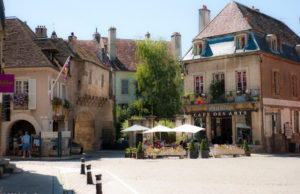
The village is famous for the Anis de Flavigny sweets made in the Abbey, carrying on a culinary tradition begun in the time of Louis IX, to a closely-guarded recipe that’s remained unchanged since the 16th century. There’s a lovely walk around the ramparts, with its gates and round towers, affording lovely views of the Auxois hills. It’s easy to see why the village was chosen in 2000 as the location for the film ‘Chocolat’ starring Juliette Binoche and Johnny Depp.
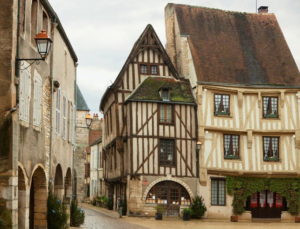
Another of the Plus Beaux Villages de France, Noyers-sur-Serein—often called Noyers la Mediévale—is in the north of the Avallonnais, 40kms from Auxerre. The town is a delight to visitors with its half-timbered houses, carved pilasters, medieval arcades and charming little squares, whose names call to mind the village’s flourishing period of farming and trade.

From the 13th century the castle was one of the strongest bastions in the kingdom, and it’s easy to see why it managed to withstand numerous sieges over the centuries. Despite its turbulent history, Noyers-sur-Serein has always remained a wine-growing village, and there are still many cellar doors open directly onto the street. On Ascension Day, local wine-growers process to the Porte de Tonnerre and decorate the statue of the Virgin and Child with their produce. Around 3rd November each year, one of the Burgundy’s most famous truffle markets is held under the arcades of the town.
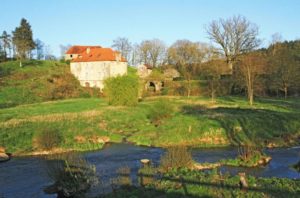
A very pleasant detour is a drive 30kms along the picturesque Serein valley north of Noyers, to the wine-growing village of Poilly-sur-Serein in the heart of the vineyards of the Chablis appellation.
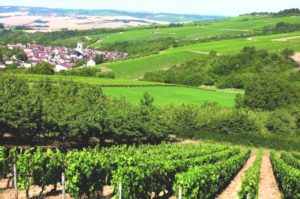
Just 14kms south of Auxerre and 20kms from the wine village of Chablis, Irancy definitely merits a visit. Visually, it’s one of the region’s vineyard gems as the slopes of vines face south, capturing that all-important midday sun. As well as its famous chardonnay vines, this area is also full of cherry trees. The village itself is a very pleasant stop-off for a gentle stroll to soak up its timeless atmosphere.
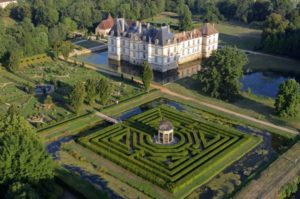
It’s well-known that Burgundy has many fine châteaux, and it would be easy to spend most of one’s time on a château crawl at the expense of the many other attractions. However, without doubt one of the most beautiful in the region is Château de Cormatin, located between Tournus and Cluny, in the heart of southern Burgundy. Constructed in 1605, it managed to escape destruction during the Revolution.
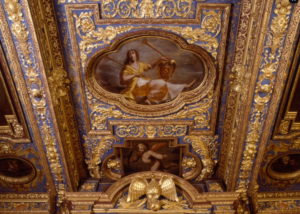
No expense was spared on this majestic edifice, its interiors and magnificent gardens. The rooms glitter like jewels, and visitors will discover the gilded rooms of the most luxurious Louis XIII painted apartment still in existence in France. Surrounded with a water-filled moat, the château is set in a 12 hectare park featuring flowerbeds, a traditional kitchen garden, ornamental lakes and 200 year old lime trees.
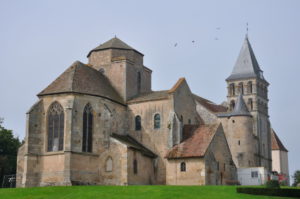
There are a number of interesting villages to the north of Cormatin, many of them adorned with Romanesque churches: the 11th century St Martins at Chapaize is the most unusual, but Malay, Ougy and Saint-Hippolyte are also well worth visiting.
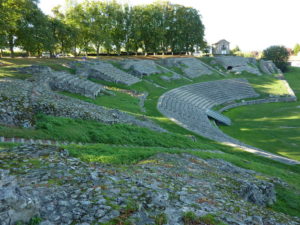
If you’re interested in the Roman occupation of Gaul, a visit to Autun, about 50kms west of Beaune, is a must. Once the tribal capital of the Aedui, it was rebuilt as an important Roman town during the Principate of the Emperor Augustus and appropriately named Augustodunum, a constant reminder to the Gauls as to who was now in charge. On the eastern side of the town are the ruins of what was once the largest Roman theatre in Gaul, which had seated more than 20,000 spectators.
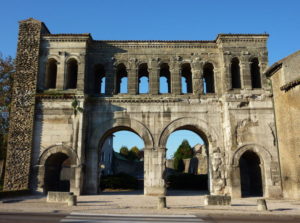
Sections of the Roman ramparts survive, as well as two of the ancient town gates, Porte d’Arroux and Porte St André, the remains of the Temple of Janus, and a large stone pyramidal mausoleum, the Pierre de Couhard at the site of the ancient necropolis.
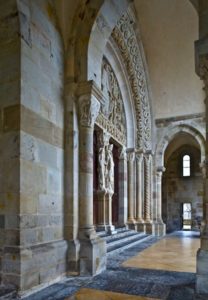
As well as its impressive Roman remains, Autun has a rich architectural heritage, notably a beautiful example of Romanesque architecture, the Cathédrale Saint-Lazare, built in 1120. Its main claim to fame is its finely carved tympanum over the main entry, regarded as a supreme accomplishment of medieval sculpture. The sanctuary has multiple richly decorated chapels, in one of which is a highly regarded Martyrdom of Saint Symphorien by Ingres, painted in 1834.
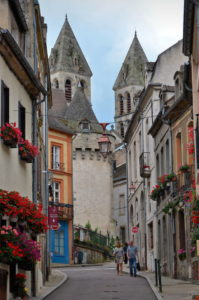
There are a numerous narrow, cobblestone pedestrianised streets, making for pleasant strolling as you admire the many fine buildings of the town. As well, the town is the gateway for exploring the quiet countryside of the Morvan Natural Park, to the west of the town.
One of the special attractions of the Burgundy district is the opportunity of taking a barge cruise along what are arguably the prettiest canals in France. One advantage of these cruises is that you experience quite a number of smaller, lesser-known villages and towns and unique scenery in a relatively short time, as itineraries are usually around 6 or 7 days duration.
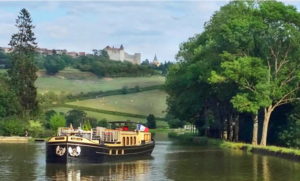
The waterways wind through the heart of the region’s renowned vineyards, medieval towns, elegant châteaux, magnificent cathedrals and picturesque villages, offering a wealth of sightseeing and gastronomic opportunities.
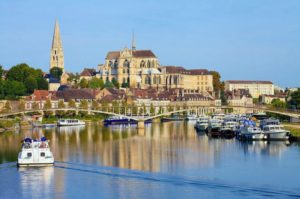
A number of companies offer cruises along the Canal du Niverais starting in Auxerre (often with transport provided from Paris), taking in Vincelles, Mailly-la-Ville, pass through the Chablis area, on to Vezelay, and ending in Chevroches.
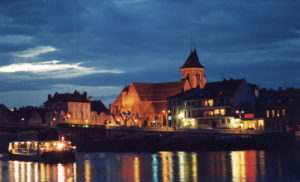
Other cruises are along sections of the Canal de Bourgogne, perhaps taking a southern route starting or finishing in Dijon, and allowing time to visit St Julien-sur-Dheune, Remigny, Rully, Fragnes, to St-Jean-de-Losne.
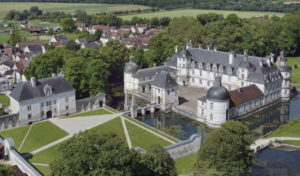
A northern route along the Canal de Bourgogne might start at Venarey-les-Laumes, take in tiny canal-side villages such as Nogent, Courcelles and Les Granges, on to Montbard, Ravieres, where shore excursions could visit the UNESCO World Heritage Site of the Abbaye de Fontenay, then cruise to Lezinnes and terminating in Tanlay.
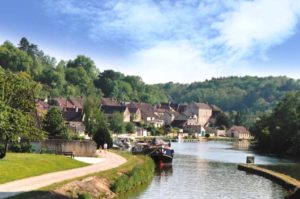
As you’d expect from trips in this part of France, all barge cruises offer excursions to wineries for tastings of the local wines.
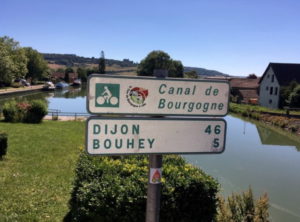
However, as well as the many prestigious wineries to visit, and excellent local cuisine on board, the frequent stops at waterway locks allow passengers to hop off and walk or cycle along the canal towpath and catch up with the barge further downstream. Sounds like the perfect combination of the pleasures of “slow travel”.
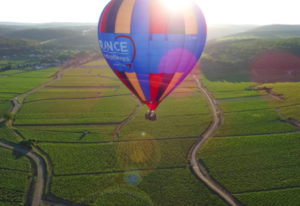
The Burgundy is also famous for offering the unforgettable experience of a hot-air balloon flight over the castles, villages, vineyards and breathtaking landscapes of the region. If you’ve always wanted to experience the incredible feeling of freedom from the sensation of floating gently on the breeze above amazing scenery, this is the perfect location to indulge that wish! Hot air balloons operate from April to October, weather permitting, early in the morning or late in the afternoon, as during these times the air is more stable, offering the best conditions for a comfortable journey.
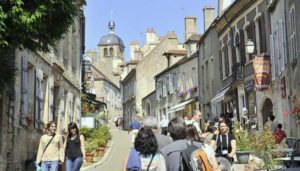
There are various starting locations in Burgundy for hot air balloon trips, such as Vézelay and Beaune. Numerous companies run these tours, and a quick Google search will come up with a good list to investigate.
Burgundy is a region richly endowed with a treasure-trove of wonderful sights and experiences to satisfy every taste and interest. Put it on your Must Visit list for next time!
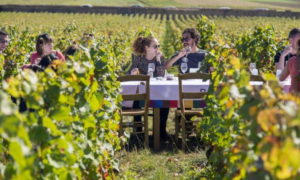


Wonderful story!
Write more please.
Hi Angela,
Thank you so much for your warm words of praise–much appreciated! So glad you enjoyed it. I guess it’s as close as we’re going to get to that part of the world for a while yet, but we’ve got a lot of great places on our Must Visit list, haven’t we? Kind regards,
Cheryl
Fascinating as always. And your research….staggering.
Hi Nadine,
Wow! Coming from someone I know to be a good researcher herself…! Much appreciated, but I must say, I do love doing the research, and this is a favourite part of the world, and luckily still some parts yet to be discovered.
Cheers, Cheryl